
Long-Term Monitoring Trend Graphs
Barnacle cover in target plots at Stairs (consist almost exclusively of Chthamalus dalli/fissus) remained fairly high until 1997/1998, when both a large El Niño event and an oil spill impacted the site (see discussion below). Barnacle cover continued to plummet until around 1999/2000, and showed only limited recovery until 2019, when a period of sharp recovery began. As of 2024, barnacle cover was on par with initial levels. As with barnacles, Mytilus californianus cover in mussel plots was quite high until 1997, when Stairs was hit hard by a series of large-wave events associated with the 1997/98 El Niño. Mussels were likely stressed by the warmer water and were ripped out in two plots by large waves. Some recovery has occurred in these plots since ochre stars declined in 2014, but mussel cover in the plots is still far below original levels. The mussel bed surrounding some plots has expanded substantially in recent years, thus continued recovery within the plots is likely.
Cover of the rockweed, Silvetia, within plots where it was targeted was initially high, and then declined somewhat in 1995. As with most other species at Stairs, Silvetia was severely impacted by the 1997/98 El Niño event, and cover declined and then stabilized (with seasonal variation) at around 25%. This decline was accompanied by a slight increase of Endocladia, but rock cover also increased, indicating that some open space was not colonized by other species. Non-coralline crusts increased in several plots, and another rockweed, Fucus, colonized one plot, but then disappeared in 2015. Although Silvetia cover has not recovered to historic levels in the plots, it is common at the site overall. In fact, Stairs is one of the only sites in the entire MARINe network where all four west-coast rockweed species are present (Pelvetiopsis, Hesperophycus, Silvetia, and Fucus). Endocladia cover in its target plots was relatively stable over time, with strong seasonal variation (higher in spring). This seasonal fluctuation is typical of Endocladia and was observed at other sites as well.
“Recovery” plots were established after the 1997/98 El Niño event, when huge sections of reef (up to 17m x 5m) were removed by extreme wave events, leaving several large, newly exposed areas of bare rock. These natural clearings provided us with a unique opportunity to document community succession in the mid-intertidal. Nearly all succession studies are done in artificially cleared patches, which are small relative to the reef size and often recover via encroachment by surrounding species. Because newly exposed sections of reef at Stairs were so large, they were likely to “recover” via colonization by propagules and thus had the potential to develop into communities quite different from surrounding, undisturbed areas. Eight recovery plots were originally set-up, but sixfour have been lost over time due to subsequent large-wave events that have removed additional sections of reef. “Non-coralline crusts”, the crustose forms of red and brown algae, were among the earliest colonizers of these completely bare plots. In these plots, non-coralline crusts consisted primarily of Ralfsia spp., Petrospongium rugosum, and the crustose form of Mastocarpus (formerly called “Petrocelis”). Unexpectedly, the green alga, Cladophora, also colonized a few plots early on and then disappeared. Non-coralline crusts have persisted in all remaining recovery plots. The rockweed, Silvetia steadily increased in cover through 2014 but has since declined.
Surfgrass (Phyllospadix) was impacted more than any other species by the 1997/98 El Niño event, experiencing a nearly 80% loss between fall 1997 (pre-storm destruction) and spring 1998 (post-destruction). Surfgrass grows from rhizome-like holdfasts and has difficultly re-establishing itself once these holdfasts have been removed. The large wave events associated with the El Niño storms ripped out nearly all rhizomes, and even removed large sections of rock within the transects where surfgrass is sampled. Thus, it was surprising and encouraging that surfgrass steadily recovered through 2009. Surfgrass cover remained stable at around 60% through 2015 but has experienced a slight decline in recent years, likely due to large storm events and mussel encroachment.
Pisaster (ochre star) numbers have fluctuated substantially at Stairs but showed a steady decline between 2008-2011. In 2014 numbers were further reduced by sea star wasting syndrome. The large number of juveniles recorded in spring 2016 were evidence of an earlier, successful recruitment event. However, subsequent surveys suggest that most juveniles did not survive, as sea star numbers within plots continued to be quite low. An uptick in numbers in 2024, with a wide spread of size classes, might be an early indication of a recovery trend. High surf prevented sampling of plot 1 in fall 2018 and plots 1 and 2 in fall 2019.
In order to standardize species resolution across all MARINe groups and over time, some species (typically rare) were lumped for graphical presentation of Long-Term monitoring data. See lumped categories for definitions (some variation occurs between methods and over time).
If you experience any barriers accessing the trend graphs below, please contact (pacificr@ucsc.edu) for help.
Photo Plots

Below are the trends observed for each Photo Plot target species at this site. Long-Term percent cover trend graphs also include any species that reached a minimum of 25% cover during any single point in time within a given target species assemblage. Breaks in trend lines represent missed sampling events. For additional species observed that did not meet this 25% threshold, please use the Graphing Tool.
Chthamalus/Balanus (Acorn Barnacles) – percent cover
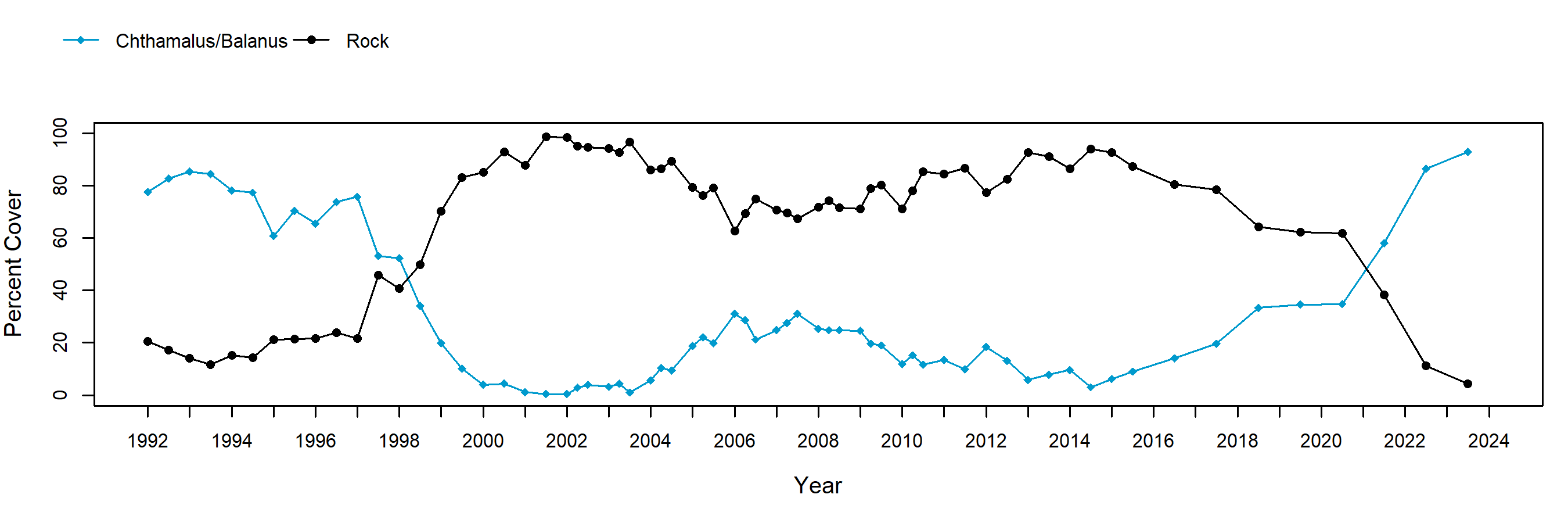
Chthamalus/Balanus (Acorn Barnacles) – motile invertebrate counts
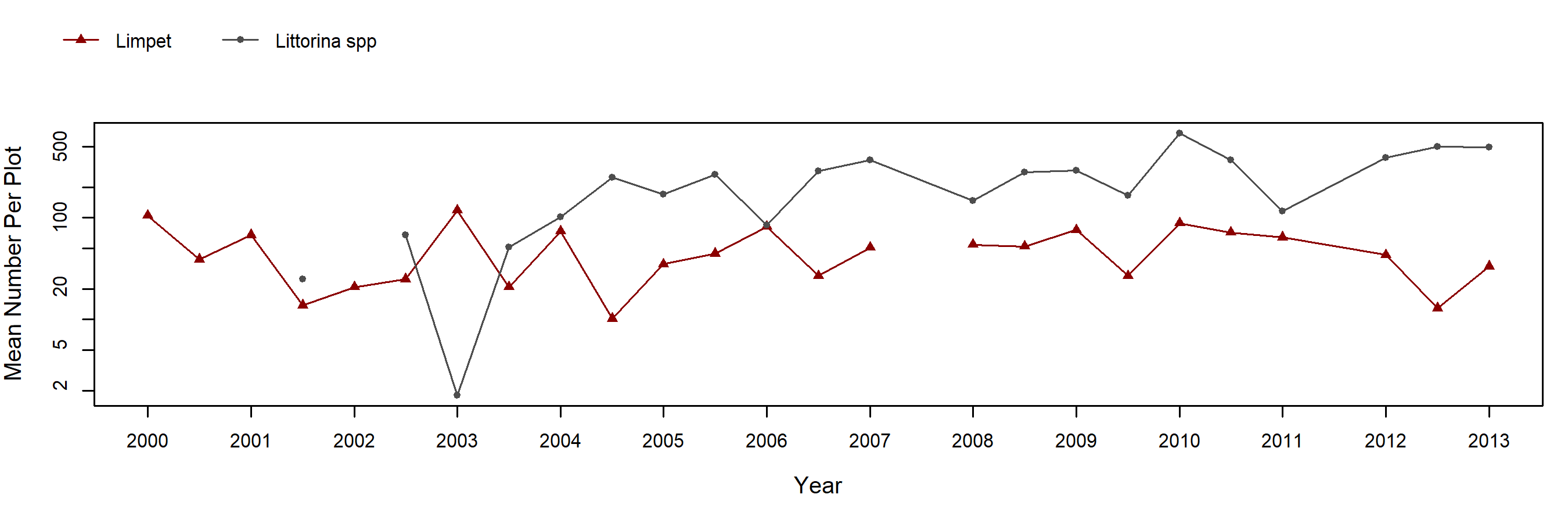
Mytilus (California Mussel) – percent cover
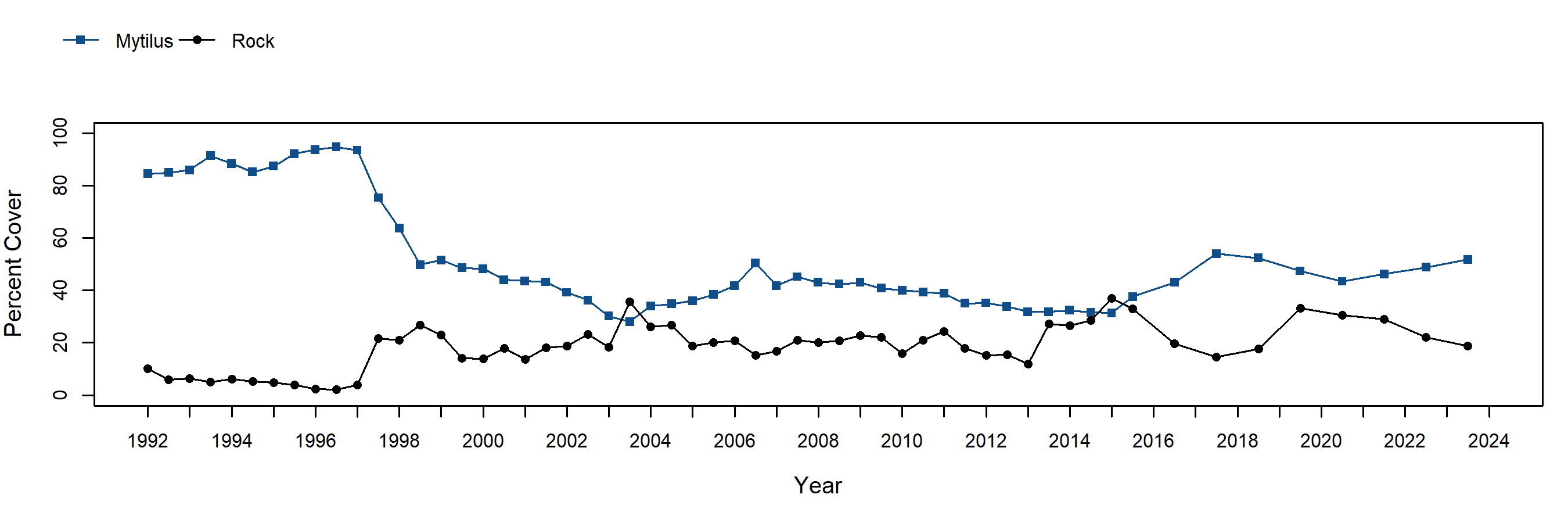
Mytilus (California Mussel) – motile invertebrate counts
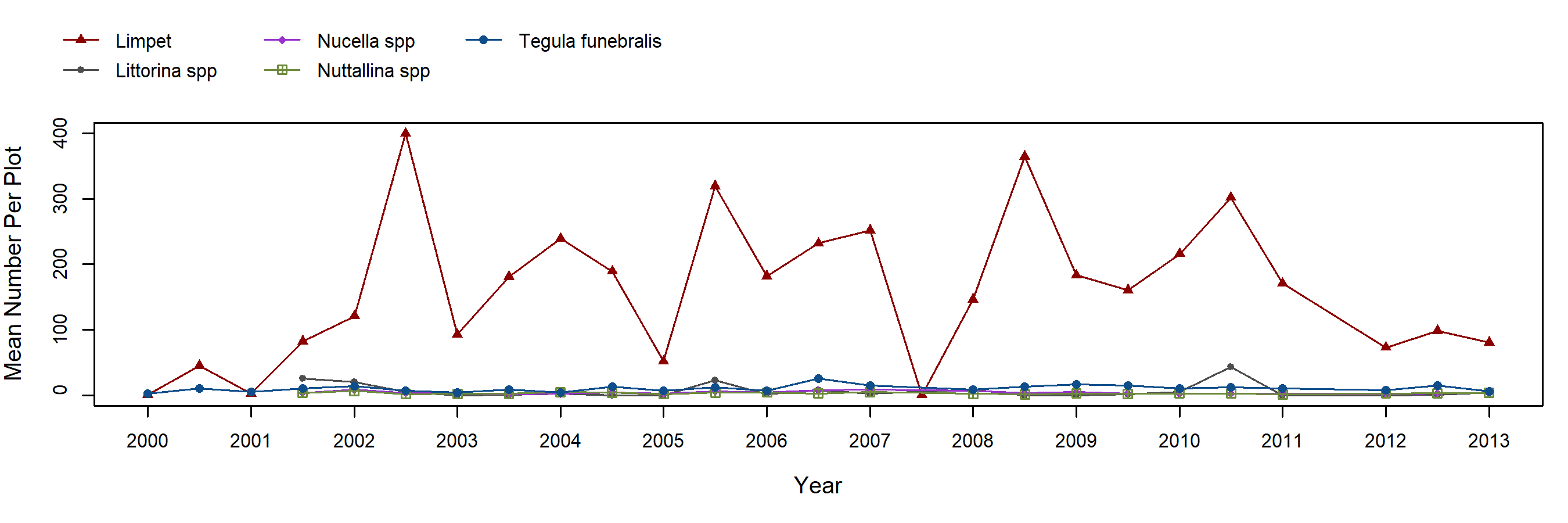
Silvetia (Golden Rockweed) – percent cover
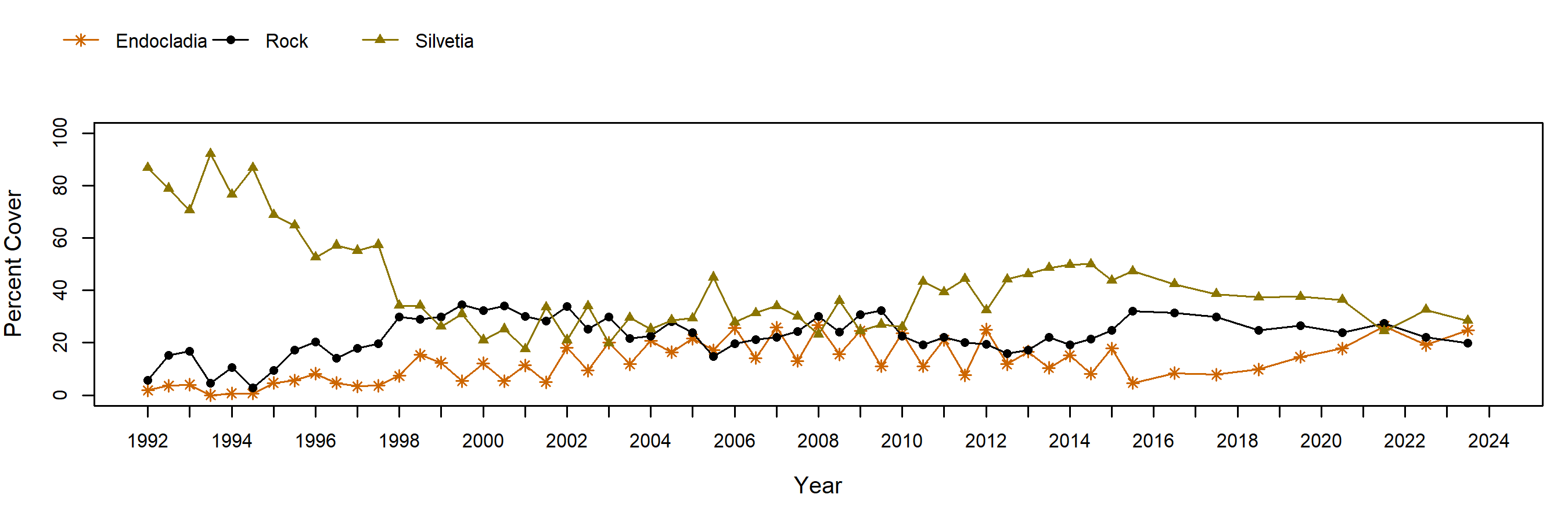
Silvetia (Golden Rockweed) – motile invertebrate counts
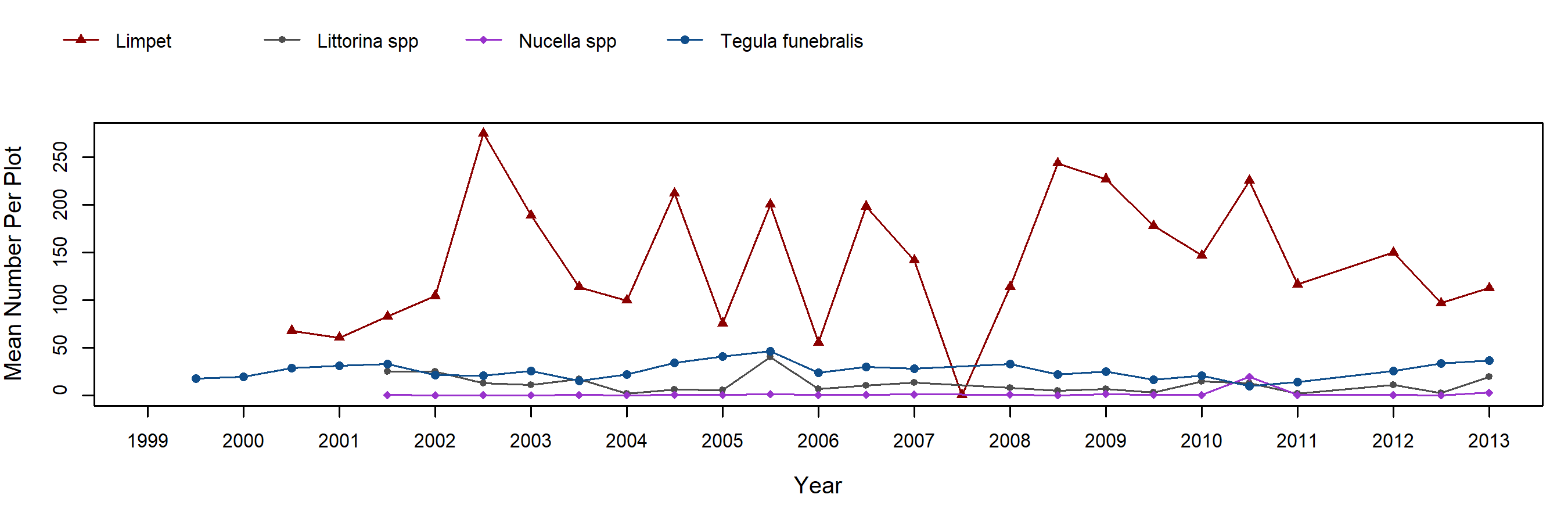
Endocladia (Turfweed) – percent cover
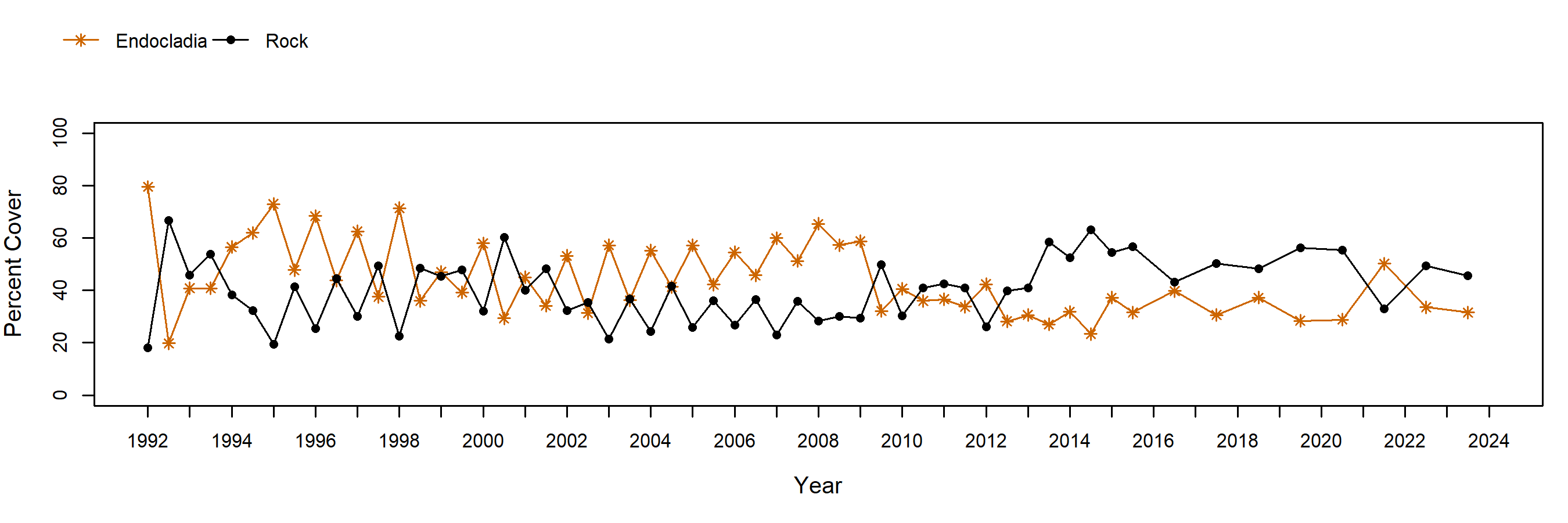
Endocladia (Turfweed) – motile invertebrate counts
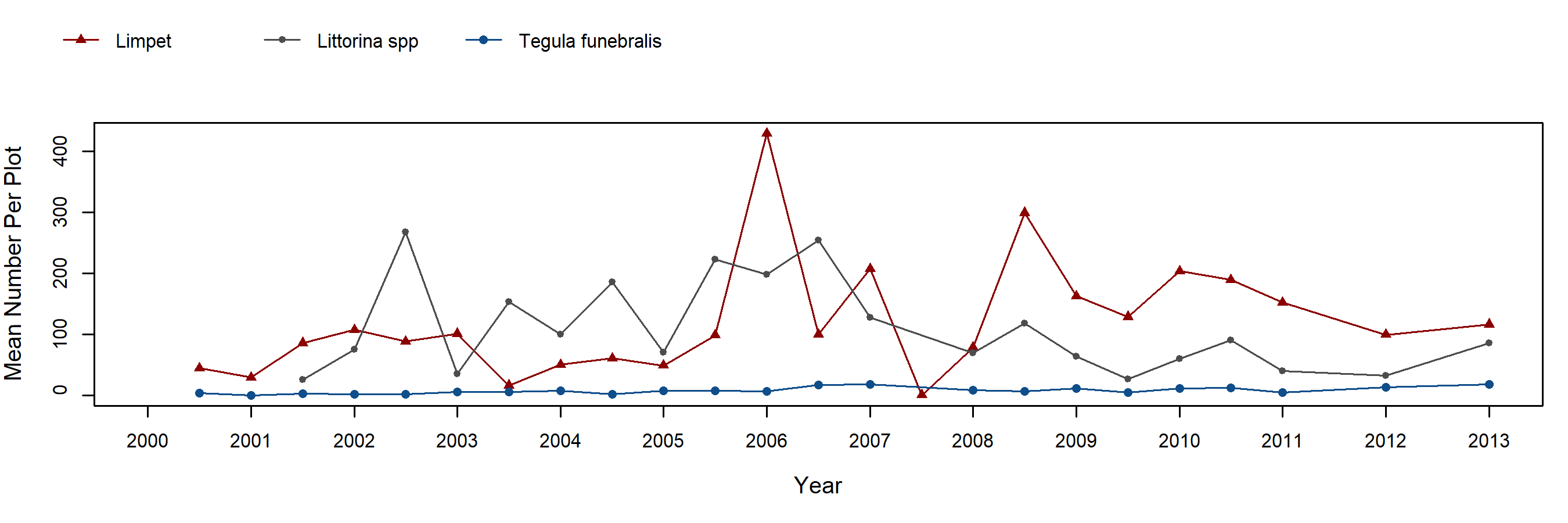
Recovery – percent cover
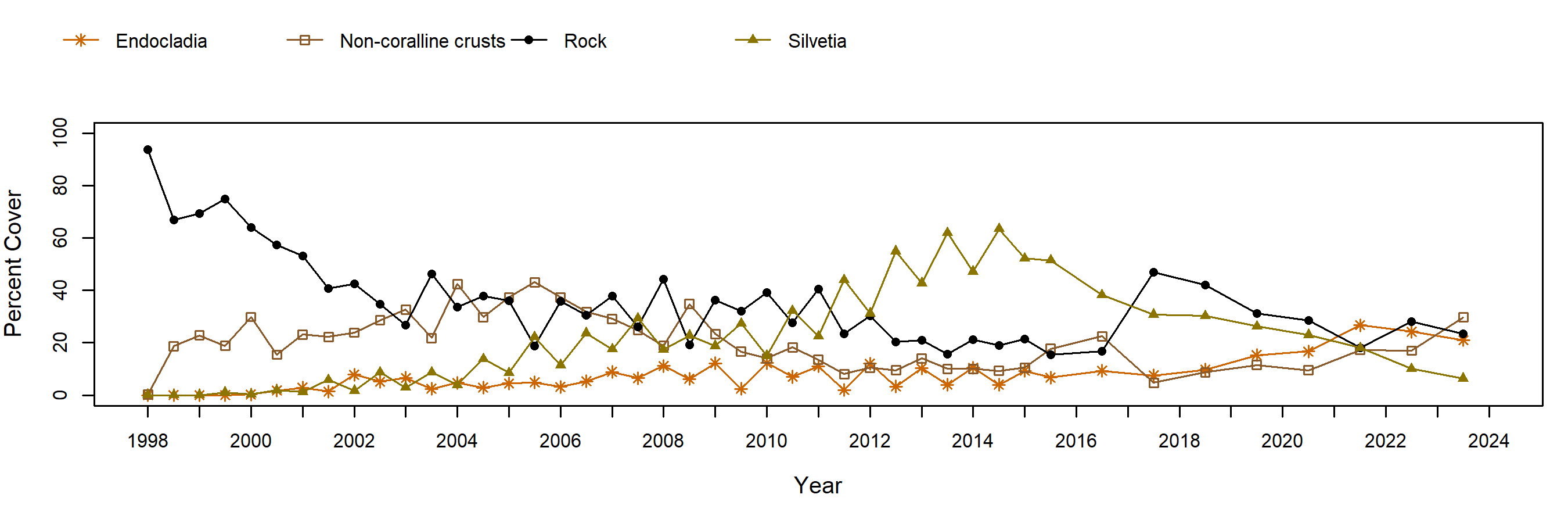
Recovery – motile invertebrate counts
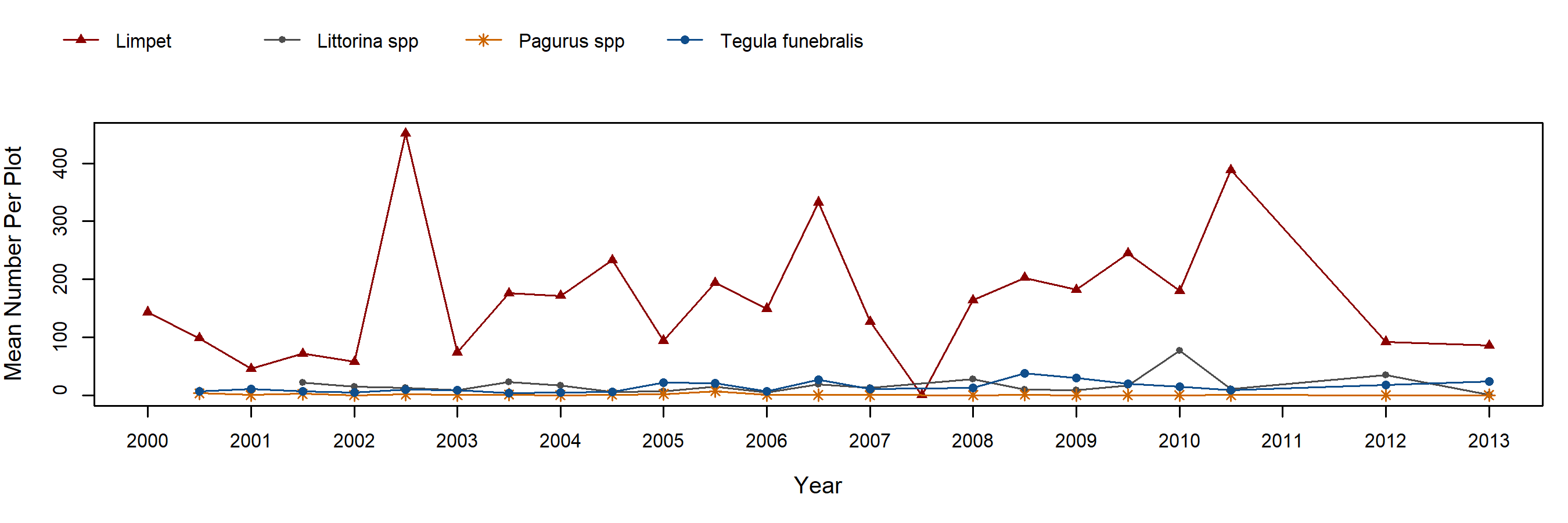
Transects

Below are the trends observed for each Transect target species at this site. Long-Term trend graphs also include any species that reached a minimum of 25% cover during any single point in time within a given target species assemblage. Breaks in trend lines represent missed sampling events.
Phyllospadix (Surfgrass)
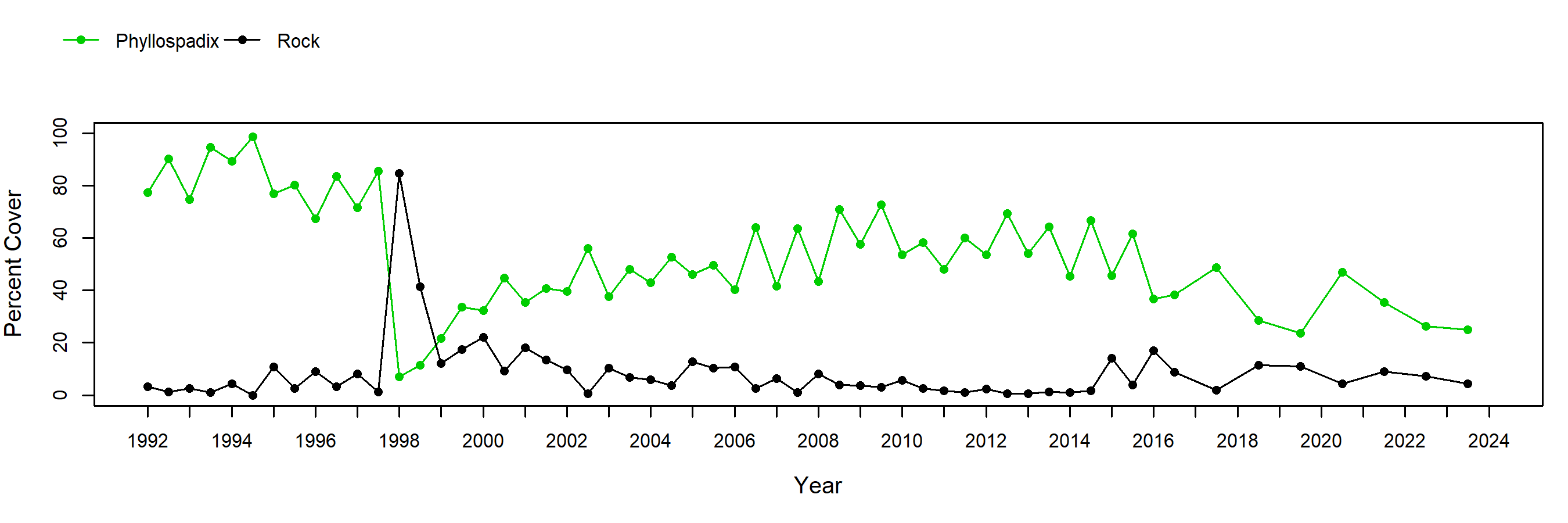
Species Counts and Sizes

Species Counts and Sizes (where recorded) for Pisaster are shown below for this site. At some sites, other sea star species and Katharina are counted in addition to Pisaster. The sum of all individuals across all plots is displayed. Note that data gaps are represented by breaks in long-term count trend lines, but are not shown in size plots.
Pisaster ochraceus (Ochre Star) – counts
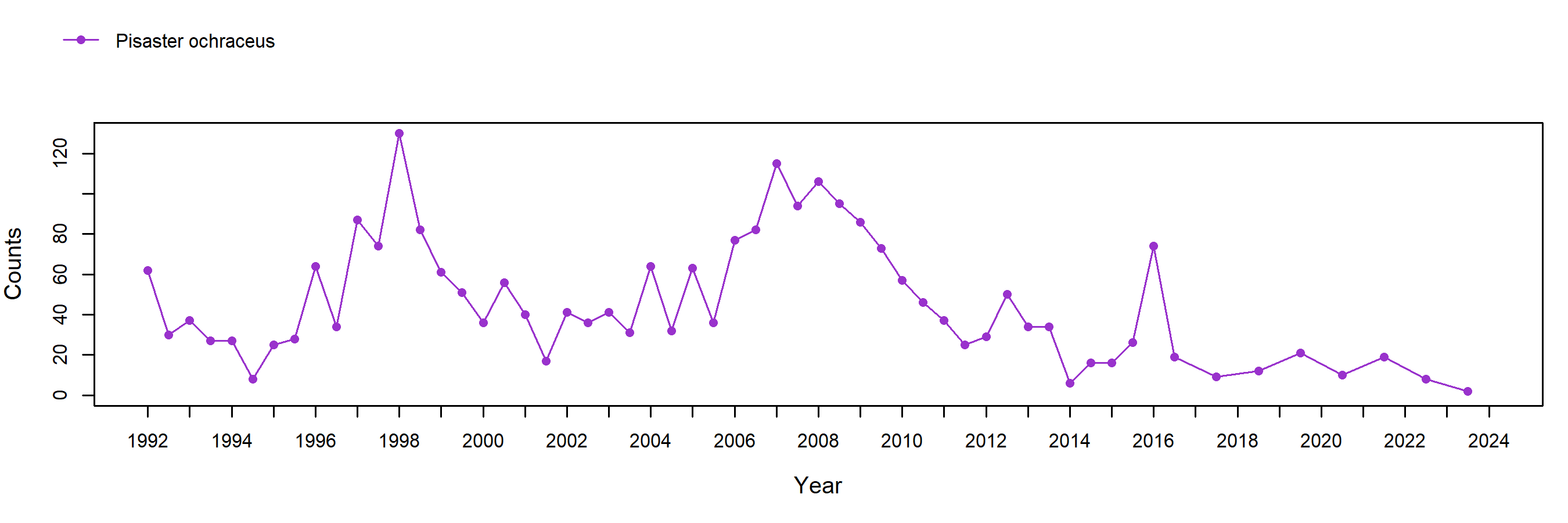
Pisaster ochraceus (Ochre Star) – sizes

